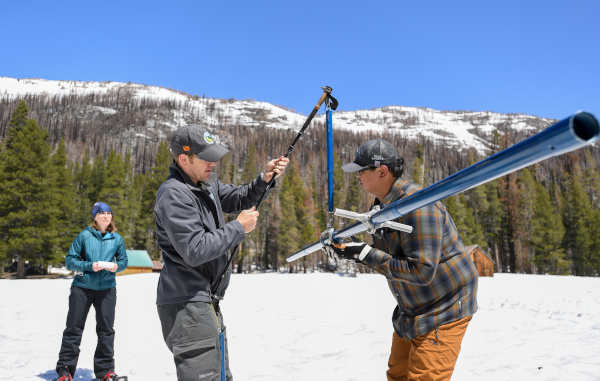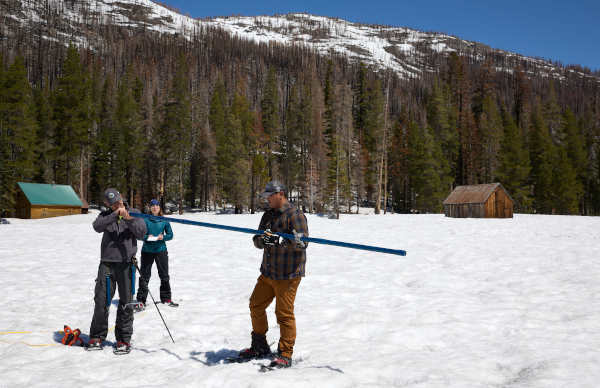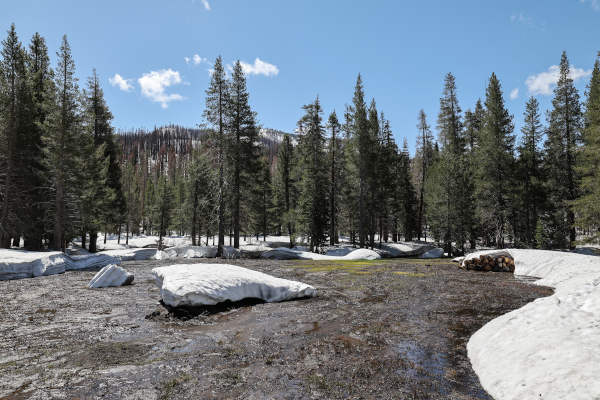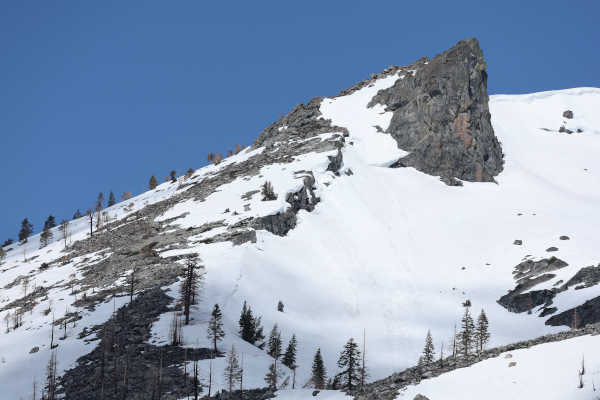- Elizabeth Larson
U.S. Fish and Wildlife denies emergency listing for Clear Lake hitch; full species evaluation to be completed in 2025
LAKE COUNTY, Calif. — The U.S. Fish and Wildlife Service said Tuesday that it will not grant an emergency endangered species listing to the Clear Lake hitch, however, a listing under the agency’s regular process could still happen after a species evaluation is complete in two years’ time.
The Fish and Wildlife Service said it will continue to invest in projects that support the hitch’s recovery while moving forward with its full evaluation of the species scheduled to be completed by January 2025.
Lake County News reached out to Sarah Ryan, environmental director for the Big Valley Pomo on Tuesday, to ask for the tribe’s comment. However, as of press time, the tribe did not offer a formal response to the federal emergency listing decision.
Meg Townsend of the Center for Biological Diversity, who has been working on the organization’s efforts to save the hitch, said it’s unfortunate that Fish and Wildlife seems to believe that an emergency listing is only for extremely rare situations.
“We really believe the hitch should have qualified,” Townsend said.
The hitch, also known as the “chi” to Lake County’s Pomo tribes — for whom it’s traditionally been a primary food source — is one of Clear Lake’s native fish.
It’s been listed as threatened under the California Endangered Species Act since 2014.
In late 2020, Fish and Wildlife declined to list the fish federally, which led to a lawsuit seeking reconsideration filed in August 2021 by the Center for Biological Diversity — whose work led to the state listing.
In recent years, as the back and forth about the federal listing has taken place, tribes and other observers have reported a major decline in hitch numbers, a situation that’s largely been attributed to climate change, habitat loss, a series of drought years and poor water quality in Clear Lake and its tributaries.
In November, the California Fish and Game Commission wrote to the U.S. Fish and Wildlife Service to request emergency listing of the hitch under the Endangered Species Act.
Tribal concerns for the hitch’s survival led them to join with the Center for Biological Diversity to advocate for that emergency listing action in December following a summit on the hitch situation.
In February, the Board of Supervisors proclaimed a local emergency for the hitch.
Then, in March, apparently bolstered by high water in Clear Lake and its tributaries, the hitch appeared by the thousands in local creeks as they began their annual spawning run.
After considering the immediacy of the threats to the species, Fish and Wildlife said its review of the hitch’s current situation of the species “does not indicate that an emergency under the Endangered Species Act exists at this time,” according to the Tuesday statement.
“The Service is committed to helping the Clear Lake hitch regardless of its federal listing status,” said Michael Fris, field supervisor of the Service’s Sacramento Fish and Wildlife Office. “We will continue to monitor the species closely and work collaboratively with partners on projects that contribute to conserving the species.”
The agency’s Tuesday statement also noted, “While the species’ population numbers in Clear Lake are troubling, many of the issues affecting Clear Lake and its associated tributaries are chronic and have no immediate solution or need further investigation to determine an appropriate solution. The emergency listing provision is effective when there is a clear threat that can be addressed expeditiously by regulatory authorities and has only been used a handful of times in the history of the Endangered Species Act.”
While current data show the hitch population in Clear Lake is declining, the population in nearby Thurston Lake continues to successfully spawn and includes fish ranging in age from juvenile to adult. Hitch have also been reported in Blue Lakes, Fish and Wildlife reported.
Fish and Wildlife said it is funding several studies and working with local parties on a conservation strategy for the hitch.
To date, the agency said it has provided more than $1.2 million in grants and other funding to the U.S. Geological Service and Lake County tribes for monitoring, research and habitat restoration projects related to the Clear Lake hitch.
In April, the Service provided a $250,000 grant to USGS to support a mapping effort of streams and tributaries flowing into Clear Lake and identify where barriers to spawning hitch exist. This data will help Fish and Wildlife and other organizations prioritize efforts to remove barriers that impede the spawning activity.
Fish and Wildlife said it is committed to completing a conservation strategy for the hitch in 2023. The strategy identifies goals, objectives and actions that are needed to improve the species’ habitat. It also addresses the issues that are impacting the Clear Lake hitch and the watershed, including drought and climate change.
The agency said the strategy was developed alongside many partners, including tribes, local organizations, and state, federal and local government agencies. It views the conservation strategy as a recovery plan and intends to complete and implement the strategy while completing the formal evaluation of the species.
Asked if a listing is still possible depending on the assessment, Meghan Snow, a public affairs officer for Fish and Wildlife, told Lake County News in an email, “That is a possibility, but it's too early to determine. The Service will issue a call for data on the Clear Lake hitch this summer. The data collected through this process will be evaluated and integrated into the Service’s assessment of the species. The agency is on track to complete its evaluation of the Clear Lake hitch by January 2025. If the evaluation indicates that listing the species is warranted, the agency will propose listing at that time.”
The Center for Biological Diversity hopes Fish and Wildlife will do “the right thing” once the assessment is completed and list the hitch, Townsend said.
She added, “Listing doesn’t mean a species is saved.”
Townsend said it’s necessary to provide protections for species and habitat.
However, for the hitch, Townsend said no science-supported evidence is showing that protections are working. “We really need to see a population rebound this year.”
That could happen given the significant rainfall Lake County has experienced. Or, Townsend added, the recent developments with the hitch population could just “be a blip on the trend toward extinction.”
In the meantime, she acknowledged that governments are giving money to the effort to save the hitch, which came about because groups like hers, working with the tribes, called attention to the fish’s plight.
“It’s really all hands on deck,” she said.
Email Elizabeth Larson at

 How to resolve AdBlock issue?
How to resolve AdBlock issue? 










